Best Swift Programming Books to Buy in January 2026

Mastering Swift 6: Modern programming techniques for high-performance apps in Swift 6.2


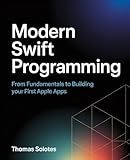
Modern Swift Programming: From Fundamentals to Building Your First Apple Apps


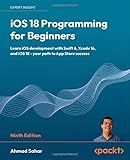
iOS 18 Programming for Beginners: Learn iOS development with Swift 6, Xcode 16, and iOS 18 - your path to App Store success


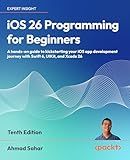
iOS 26 Programming for Beginners: A hands-on guide to kickstarting your iOS app development journey with Swift 6, UIKit, and Xcode 26


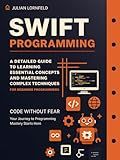
Swift Programming: A Detailed Guide to Learning Essential Concepts and Mastering Complex Techniques



Java for Beginners: Build Your Dream Tech Career with Engaging Lessons and Projects


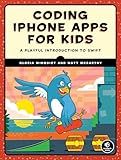
Coding iPhone Apps for Kids: A Playful Introduction to Swift



Learning Swift: Building Apps for macOS, iOS, and Beyond



Head First Swift: A Learner's Guide to Programming with Swift


To filter an array in Swift, you can use the filter method. This method takes a closure as its argument, which specifies a condition that each element in the array must satisfy in order to be included in the filtered result. The closure should return a boolean value indicating whether the element should be included in the filtered array.
For example, if you have an array of integers and you want to filter out all the even numbers, you can use the following code:
let numbers = [1, 2, 3, 4, 5, 6, 7, 8, 9, 10] let filteredNumbers = numbers.filter { $0 % 2 != 0 }
print(filteredNumbers) // Output: [1, 3, 5, 7, 9]
In this example, the closure { $0 % 2 != 0 } checks if the element is an odd number by calculating its remainder when divided by 2. If the remainder is not equal to 0, the number is included in the filtered result.
You can use the filter method with any type of array, and customize the filtering logic based on your requirements.
What is the difference between the filter and map methods in Swift?
The main difference between the filter and map methods in Swift is in their functionality:
- filter: The filter method is used to create a new array containing only the elements that satisfy a certain condition. It takes a closure as an argument that returns a Bool value, which is used to determine whether each element should be included in the resulting array. Example:
let numbers = [1, 2, 3, 4, 5] let evenNumbers = numbers.filter { $0 % 2 == 0 } print(evenNumbers) // Output: [2, 4]
- map: The map method is used to transform each element of an array using a provided transformation function. It applies the transformation to each element and returns a new array containing the transformed elements. Example:
let numbers = [1, 2, 3, 4, 5] let squaredNumbers = numbers.map { $0 * $0 } print(squaredNumbers) // Output: [1, 4, 9, 16, 25]
In summary, filter is used to selectively include elements based on a condition, while map is used to transform elements in an array into a new form.
What are some best practices for efficiently filtering an array in Swift?
- Use higher-order functions such as filter, map, and reduce rather than traditional loops for filtering arrays. These functions are more concise, readable, and often more efficient.
- Use the filter method with a closure to only include elements that meet a certain condition. For example, to filter out all even numbers from an array:
let numbers = [1, 2, 3, 4, 5] let filteredNumbers = numbers.filter { $0 % 2 != 0 }
- Avoid unnecessary computations within the closure passed to filter. Only include the necessary conditions for filtering.
- If the filtering condition is complex or requires multiple steps, consider breaking it down into separate functions or chaining multiple higher-order functions together for clarity and maintainability.
- Consider using lazy when dealing with large arrays to defer the computation until it is actually needed. This can improve performance by avoiding unnecessary iterations.
- Profile and benchmark different filtering methods to determine which one works best for your specific use case. Experiment with different approaches and compare their performance using tools like Instruments or Xcode's built-in profiling tools.
- Use the compactMap method to simultaneously filter out nil values and extract non-nil values from an array of optionals. This can be especially useful when working with optional values in an array.
Overall, choosing the right filtering method depends on the specific requirements of your application, the size of the array, and the complexity of the filtering condition. It is important to test and profile different approaches to find the most efficient solution for your specific use case.
How to filter an array in Swift to get only unique elements?
You can filter an array to get only unique elements in Swift by using the Set data structure. Here's an example of how you can do this:
let arrayWithDuplicates = [1, 2, 3, 1, 2, 4, 5] let set = Set(arrayWithDuplicates) let uniqueArray = Array(set)
print(uniqueArray) // [1, 2, 3, 4, 5]
In this example, we first create an array with duplicate elements. We then convert this array into a Set, which automatically removes any duplicate elements. Finally, we convert the Set back into an array to get our unique elements.
How to filter an array in Swift based on a predicate?
In Swift, you can filter an array based on a predicate using the filter method. Here's an example of how you can filter an array of integers to only include numbers greater than 5:
let numbers = [1, 7, 3, 9, 2, 6, 4]
let filteredNumbers = numbers.filter { $0 > 5 }
print(filteredNumbers) // Output: [7, 9, 6]
In this example, the filter method takes a closure as its argument, which represents the predicate. The closure receives each element of the array as an input and returns a boolean value indicating whether the element should be included in the filtered array.
You can customize the predicate to filter the array based on different conditions, such as checking for even numbers, strings containing a specific substring, or any other criteria that can be expressed as a boolean condition.
What is the filterMap method in Swift and how is it different from the filter method?
The filterMap method in Swift is a combination of the filter and map methods. It allows you to apply a transformation to each element of a sequence, and then filter out the elements where the transformation returns nil.
Here's an example of how filterMap works:
let numbers = [1, 2, 3, 4, 5]
let doubledEvenNumbers = numbers.filterMap { number in if number % 2 == 0 { return number * 2 } else { return nil } }
print(doubledEvenNumbers) // Output: [4, 8]
In this example, we first filter out the even numbers using filter, and then double each even number using map. The filterMap method simplifies this operation by combining both filtering and mapping in a single step.
The main difference between filter and filterMap is that filter only allows you to filter elements based on a condition, while filterMap allows you to transform each element and then filter out the ones that have been transformed to nil.
It's worth mentioning that the filterMap method is not a standard library method in Swift, but it can be easily implemented as an extension on Sequence in your code.
